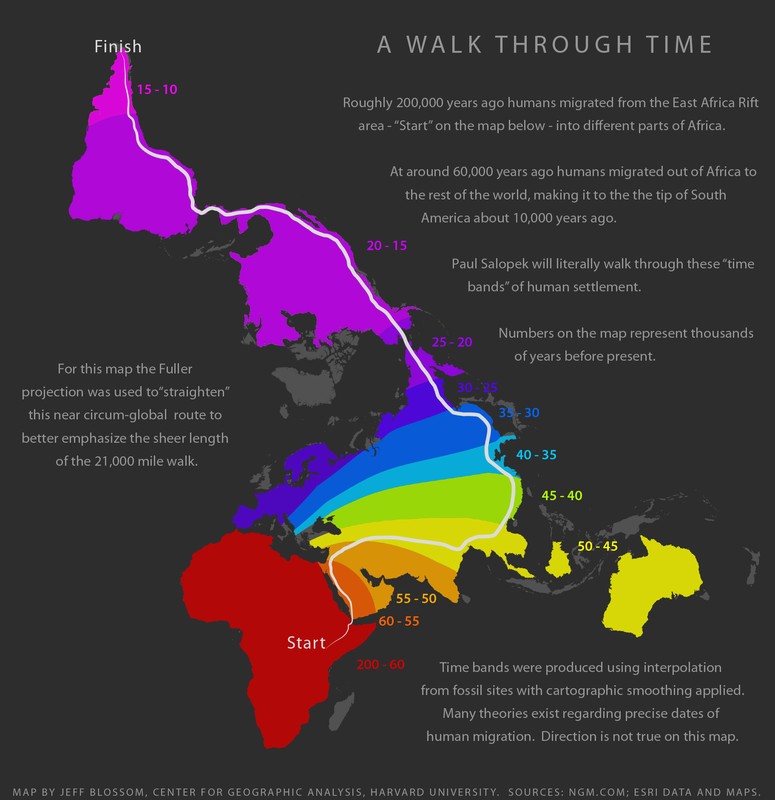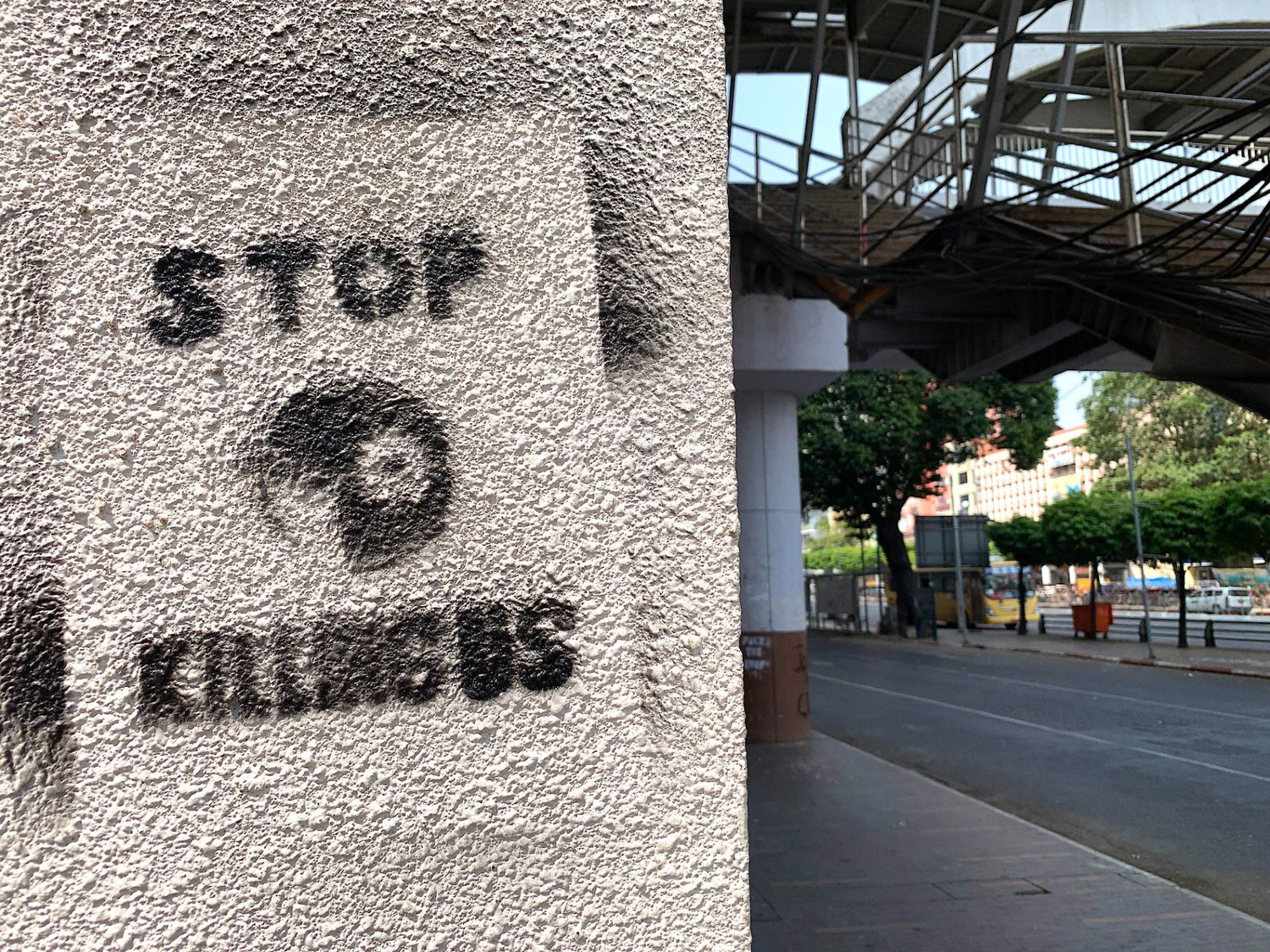By: Alexandra Maseda
In 2013 a journalist by the name of Paul Salopek began a 24,000 mile journey across the globe to trace the journey our ancestors took. While on this mission he would also look at current events such as climate change or technological advancements that would effect the areas he would visit. His dedication to this experiment would allow for viewers to follow along and get to know their world and history better. In his journal the stories of thousands of people are unraveled and those stories became available through National Geographic. Most of his journey would be on foot, while a boat would be required to travel from Asia to North America. His journey is absolutely astonishing and gives insight on the world that surrounds us, and it truly connects all different people.
This image provided by National Geographic provides an estimate of when humans migrated from area to area.

The time bands really help piece together when each spot was discovered which is something I had never considered. Right away this journal gives me knew knowledge on human history and it is fascinating. As the journal continues Paul is in the deserts of Ethiopia for the first 20 days. He documents the equipment necessary for travel, the shoes to wear, and the essentials of water and food. This section introduces all readers and Paul to what the next couple of years will look like which involves learning the ways of different people. This also makes me curious on how much Ethiopia will differ from the other areas, and if there will be any similarities among the people he meets. Paul already experiences the contrast between the desert and when he enters the first town with more modern people. Then, On April 22nd he sees the Sea for the first time and a comment is quoted in the journal about how amazed the first ancestors must have been to see the Ocean.
” I try to imagine the impression the first man must have had in front of the sea. Maybe he believed himself to have been transformed into another type of heaven.” Eva Maria Huschka comment (National Geographic).
There is a lot that happens just on this Continent alone, so many different worlds (the desert, the small town, the exploration of the Ocean) seem to be brought together in just 4 months of walking . Paul then shifts from Africa to Saudi Arabia and admits it truly is a different world,” I plunge into a delirium of contrasts: from rural to urban, from poor to rich, from slow to fast, from landscapes gripped by human feet to ones subdued by the wheel. ” (Salopek).

This photo taken from Pauls journal dated June 20th, 2013 is a huge shift from his food supply while in Africa. For starters, there is double the people photographed here, ten times the amount of food, buildings and a completely different way of life. This chapter of Pauls journey is referred to as the Holy Lands and each new day brings a lot of new information about routines in Saudi Arabia. Paul goes a lot more in depth on the cultural aspects present in Saudi Arabia than anything he did while in Africa. I am curious on his decision to do this because I feel a lot more information on ancestors could have been given, since it lacked presence of people. Africa and Saudi Arabia do share some similarities though, Paul still walks the desert and he still has his Camels to travel with.
I was most excited for Holy Lands because I knew Jerusalem would be one of his destinations. I have always been curious on what life is like over there and Paul documents exactly the interaction among people with different backgrounds. “We trudge over a hundred lonesome boundaries—invisible and monumental—that Israeli and Palestinian Jerusalemites do not cross. We encounter desecrated cemeteries. (One Jewish, one Muslim.)” (Salopek). A lot of people come close, but not together and Paul experiences it all and can connect all of these backgrounds in his journal. With his exploration it is clear that cultural and religious ways of life are still very present in modern day.
Out of curiosity I skipped to where Paul currently is. I was honestly shocked to find he is still on his journey and was in Asia as of April 21, 2021. What he would see in Asia is much different from anything that was happening in Africa or Saudi Arabia. There is chaos in Yangon because of an election and protests that occured after it. 700+ citizens are killed and this country could be considered a failed state.
This image is taken from National Geographic

This journey began in a desert where people would need to work together to survive as well as get a look at what our ancestors saw when they discovered new lands. The entrance in to Saudi Arabia allows for insight on connection to various religions and how people disagree in that aspect. Though they are on the same land they cannot join together. As of now the journey takes a new turn and it is the people versus the state. We witness people being unable to connect and have conflict because of injustices. After observing these three places I am truly fascinated by the similarities and differences among them. Yangon does not seem to relate to the deserts in Africa in any way. When I consider the ancestors original journey, I wonder what their hopes for the future might have been, and if they could have even imaged hundreds of different cultures coming together on their land, but facing horrific differences such as the one displayed in Yangon. At the time of their discoveries that idea of disconnectedness would never cross their mind.